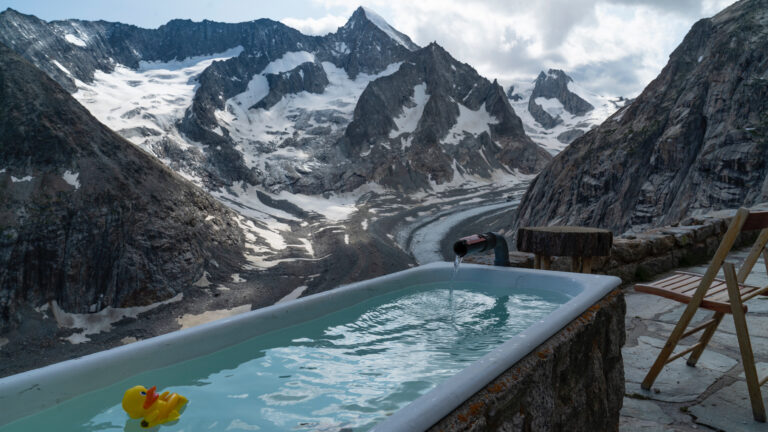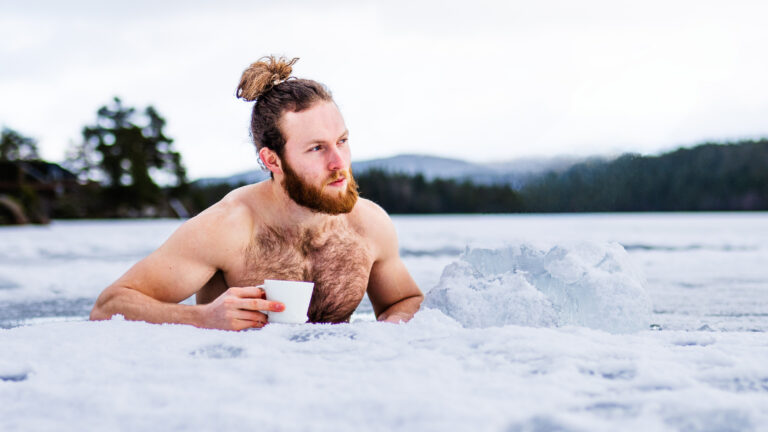How long should you stay in a cold plunge?

Athletes, fitness professionals, and wellness experts take cold plunges to gain a wide range of benefits. From muscle recovery to mental clarity, those who use this therapy claim cold plunge benefits include reduced inflammation, better sleep, and stress relief. This has increased the popularity of this chilly practice.
Of course, there is more to a cold plunge than simply diving into a cold bath. How long should you stay in a cold plunge? What steps do you need to take pre- and post-plunge? Learn how to maximize your plunge’s benefits while minimizing the risk.

Basics of a Cold Plunge
How Cold Water Affects the Body
Cold water exposure triggers a shock response in the body. That shock activates numerous systems throughout the body. For example, cold temperatures can increase blood flow, lower body temperature, and release endorphins. These benefits can lead to various potential benefits.
However, staying in cold water for too long has its risks. Exposure to the cold can lead to hypothermia or adverse cardiovascular effects.
Potential Benefits
Cold water ice baths offer numerous advantages. Reduced inflammation, enhanced muscle recovery, and improved mental clarity make cold plunges popular among athletes. Overall, they help with delayed-onset muscle soreness post-workout.
Cold plunge benefits for non-athletes include reduced stress, better quality sleep, and improved mood stabilization. Icy water temperatures trigger the parasympathetic nervous system, releasing feel-good hormones and reducing cortisol.
Risks of Prolonged Exposure
While the benefits are nice, it’s important to know the risks of prolonged exposure to cold water. Hypothermia and cardiovascular stress are significant concerns when using cold water therapy. It is crucial to listen to your body and adhere to recommended durations.
Before beginning cold immersion or other therapies, consult with your medical professionals.
Pre- and Post Plunge
Pre-Plunge Preparation
- Create a calming space where you feel comfortable.
- Wear shorts and a shirt to protect your skin and sandals to protect your toes in the ice water.
- Prepare the bath with cold water and ice. Aim for the ice bath temperature of around 50-59 degrees Fahrenheit.
- Have towels nearby and anything else you may need after the bath.
- You can start with a cold shower to gradually acclimate your body to freezing temperatures.
Post-Plunge Care
- Gradually return to a normal body temperature, starting with removing your cold, wet clothes.
- Towel-dry off and put on warm, dry clothes.
- Sip a warm drink if you enjoy them.
- Do some light physical activity to aid circulation and warm you up.
- Take note of how you feel physically and mentally to help you adjust for future plunges if needed.
Don’t jump in a hot shower. It may shock your system.
How Long Should You Stay in a Cold Plunge?
General Guidelines
For beginners, it is advisable to begin with shorter durations. Start with a duration you are comfortable with, then gradually increase your duration. Remember to take your time, go slow, and listen to your body. Always exit the plunge if you experience extreme discomfort, numbness, or shivering.
Recommended Duration
Seasoned users may already be able to withstand up to five minutes. Some experts believe that 5 minutes is enough time to reap the benefits of an ice bath. Others say five to ten minutes is how long to stay in an ice bath for the best results.
Some people can take a cold plunge for up to twenty minutes. However, an ice bath that long increases the chances of an adverse reaction, such as hypothermia. More research is needed to determine whether longer durations have benefits and, if so, whether they outweigh the risks.
Conclusion
Find your optimal cold plunge duration to reap the benefits of cold water therapy while minimizing the risks. Follow recommended guidelines and expert advice, and always listen to your body. This way you can have a safe and effective ice bath. Check with your medical professionals for insight on how a cold plunge may affect your health.
See why cold water therapy is so popular among the wellness community, fitness experts, and professional athletes. What will you gain from adding an ice bath to your wellness routine? For more detailed information on the benefits of cold plunges, visit our Cold Plunge Benefits page.






